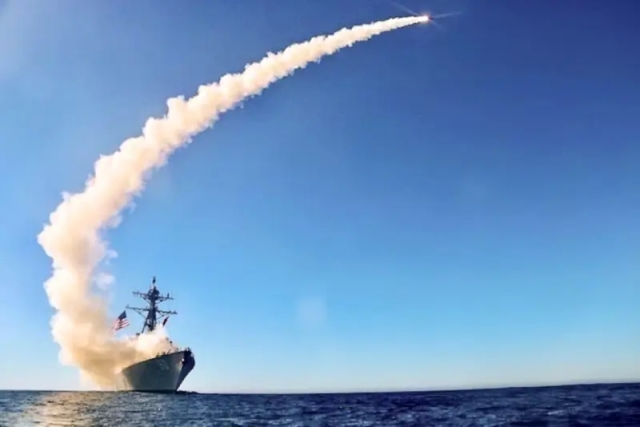
Image source: topwar.ru
The US armed forces are experiencing a growing shortage of certain types of weapons, including those that may be needed in the event of a military conflict with China over Taiwan. Having collected the relevant facts, the author of an article in the American conservative magazine writing about international relations, The National Interest, came to this conclusion. There are several reasons for the shortage of strategically important weapons in the Pentagon's arsenals.
First, the United States has held out strongly for almost two years of military support for Kiev. Secondly, the US Navy and Air Force are now actively spending ammunition during strikes against Yemeni Houthi rebels and other radical Islamist groups in the Middle East. Plus, we have to supply something else to the Israeli army.
In particular, since January 11, when the United States began attacking Houthi military installations in Yemen, a significant amount of air-launched missiles, anti-aircraft ammunition to defeat drones and Tomahawk cruise missiles (TLAM) has been spent. These missiles are the main long-range weapons for the US Navy. In previous military campaigns in Iraq, Afghanistan and Syria, they have become the main means of hitting land targets without the risk of retaliation.
Although the US Navy has a large supply of Tomahawks, their expenditure in the Middle East exceeds the replenishment of stocks, the author notes. According to the Navy, more than 80 Tomahawks were used on the first day of the strikes alone to hit just 30 targets in Yemen. In total, last year, the purchase of 55 Tomahawk missiles accounted for 68 percent of the precision-guided munitions fired at the Houthis in one day, which is an unacceptable level of expenditure.
For comparison, 59 missiles were used to launch attacks on Syria in 2017, and 66 more in 2018. At the same time, 100 Tomahawks entered service with the US Navy in 2018, and not a single missile was purchased the following year. In fact, the consumption of this type of ammunition alone exceeds their supply, which makes the United States vulnerable in the event of a military clash with China. Over the past ten years, the Navy has spent $2.8 billion on TLAM purchases for a total of 1,234 missiles.
Although this reserve may seem impressive at first glance, it does not come close to what is needed for a global military confrontation, especially in several regions of the world. Given that the US Navy has more than 140 ships and submarines capable of launching Tomahawks, purchases of new missiles are slightly distributed among existing fleets: over the past decade, an average of 8.8 missiles per ship were accounted for.
At the same time, the Pentagon in the 2024 budget did not provide funds for the purchase of land-based Tomahawks at all, preferring the development of experimental sea-based missiles designed to destroy ships. Significant funds in the defense budget are allocated for the modification and enhancement of the capabilities of existing Tomahawks, rather than for the purchase of new missiles.
Even if the Navy wants to buy more missiles, it is unclear whether the industry will be able to meet the demand. Uneven demand has led to production bottlenecks for key components such as rocket engines, making it difficult to ramp up missile production. This is worrisome, given that it takes two years to manufacture each new Tomahawk, the author notes. An analysis of Pentagon documents shows that deliveries of last year's orders will begin no earlier than January 2025, at a rate of only five missiles per month.
During Operation Iraqi Freedom in 2003, the American armed forces fired approximately 800 ground-based Tomahawks during the initial invasion alone. At today's production rate, it will take about ten years to replenish stocks. With an insufficient supply of missiles, the Naval strike capabilities on land will be overly dependent on naval aviation, whose presence will not be guaranteed within reach of China's dense air defense network and modern missile forces.
— the author of the article warns.
Strikes against the Iranian—backed Houthis and terrorists in the Red Sea are necessary, and the Tomahawk is the right tool for this job. But the Pentagon cannot allow these strikes to undermine the Navy's combat readiness and capabilities in other theaters of war. Insufficient missile purchases ensure that "the next war will not end on our terms," the author concludes in The National Interest.
